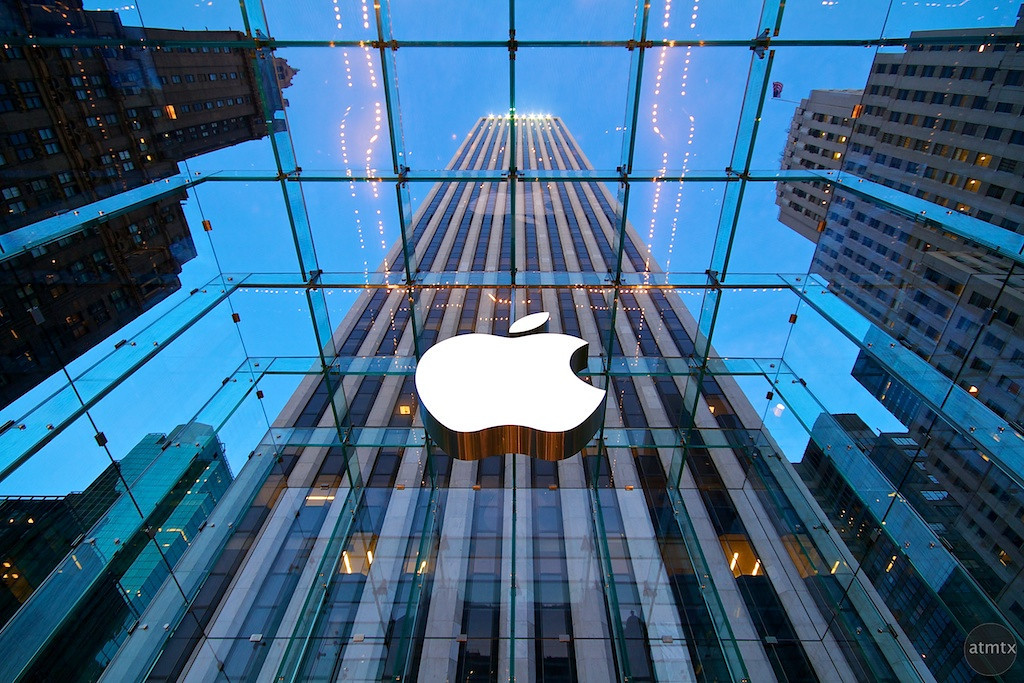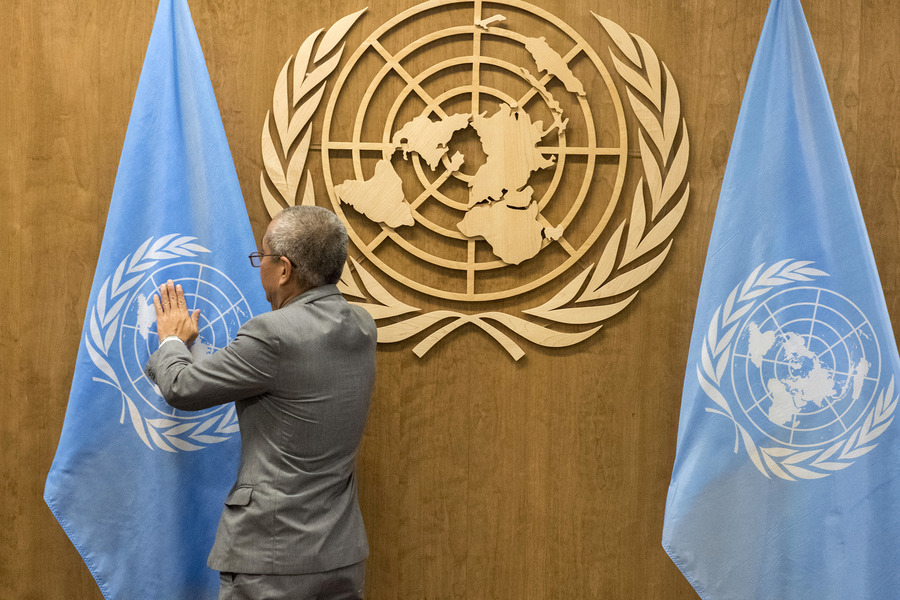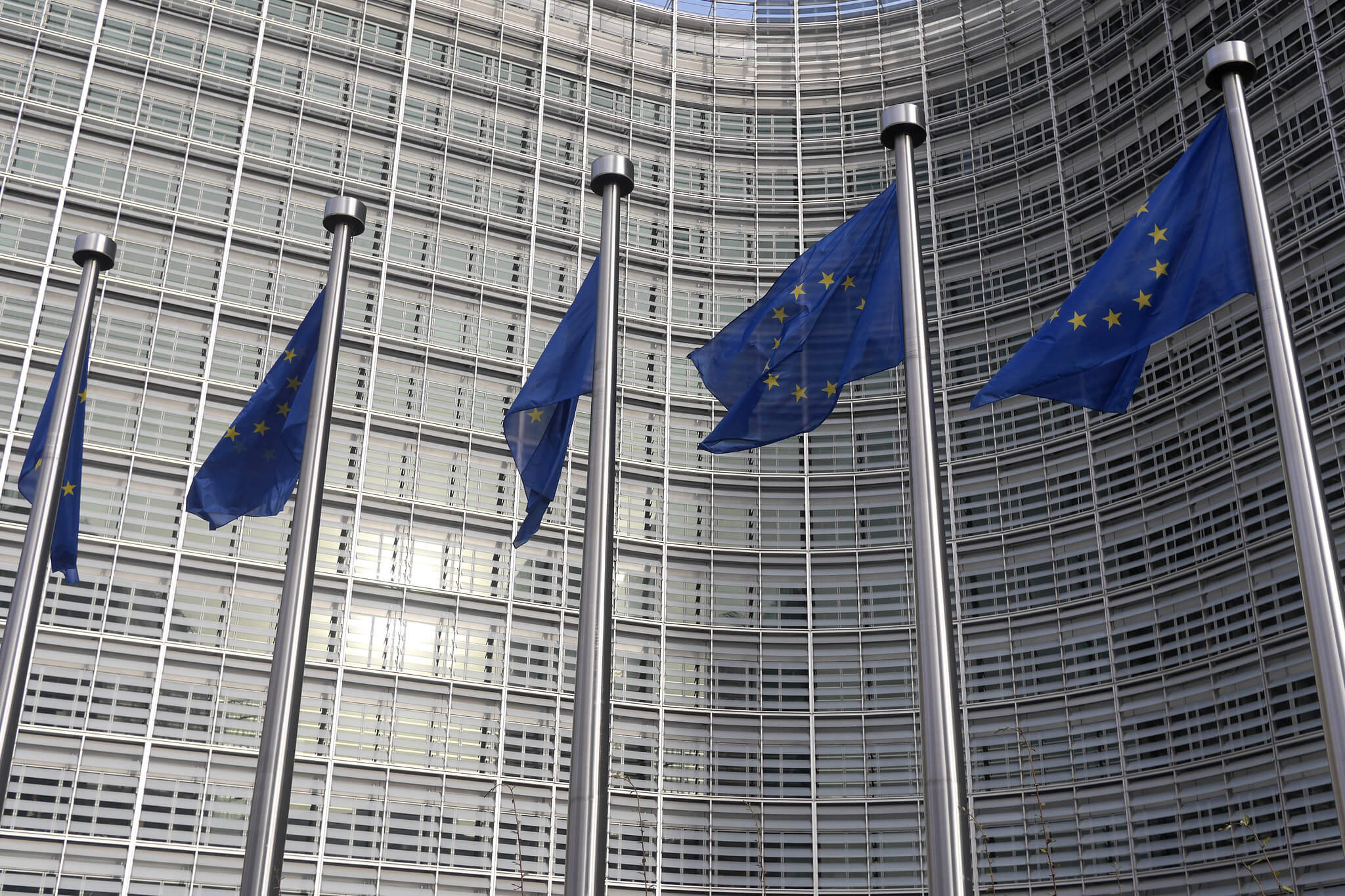Commerce and Moral Compromise in Contemporary China

Published by The Lawfare Institute
in Cooperation With

From its early days, one of Apple Computer’s greatest strengths had nothing to do with its technology or design but, rather, with its ability to leverage cultural tropes in influential advertising campaigns. On New Year’s Eve 1983, the company ran what would become one of the most celebrated commercials of all time. In an homage to George Orwell’s “1984,” a colorfully clad dissident, standing in for the company, destroyed the video monitors of the shuffling and brainwashed monochromatic masses; Apple, the ad implied, would soon do the same to the complacent product lines of IBM and its other rivals.
If Apple’s enlistment of Orwell’s anti-totalitarian message made a splash in the market, it was a later effort to sell the company’s products with an appeal to nonconformity that would offer greater insight into the company’s all-too-conformist goal of profit over principle. The same advertising firm that produced the earlier commercial used the images of famous historical thinkers, creators, and leaders for a series of television and print spots urging consumers to “think different,” which presumably meant buying more of Apple’s computers at the expense of its more staid competitors. The estates of Maria Callas and Miles Davis pitched in their likenesses, and a studiously framed silhouette of Alfred Hitchcock made an appearance. The spirit of Mahatma Gandhi might have blanched at his photograph being used in the service of global capitalism, but he would probably not have been alone in this reaction; the enrobed visage of the Dalai Lama, instead of promoting spiritual enlightenment, was simply hawking exceptionally innovative and well-designed home office products.
The Dalai Lama’s dignity was spared a little, though, in that his image did not appear in the ad campaign in the part of the world with which he is most associated. Just before the campaign was set to roll out the one-pager featuring his photograph, Apple decided to pull from Asia all advertisements portraying the Dalai Lama. As Patrick McGee’s “Apple in China: The Capture of the World’s Greatest Company” makes clear, using the Dalai Lama’s picture would have upset the Chinese government, and, as the book persuasively argues, placating the People’s Republic of China’s (PRC’s) totalitarian elite has become one of the company’s most important business imperatives.
***
McGee’s chronicle of the multi-decade relationship between Apple, its suppliers and fabricators in China, and the PRC’s government is written in the form of a narrative history, but by the time it concludes, it reads more like an indictment detailing the company’s compromises with and contributions to one of the most pervasively authoritarian regimes in the contemporary world. Relying largely on original research and over 200 interviews with former Apple employees, McGee lays out the most comprehensive account yet published of the moral quagmires that entrap American businesses that fail to fully understand the nature of the regime in East Asia that offers them the globe’s largest marketplace and some of its cheapest factories. One could call it a cautionary tale, perhaps, except that McGee demonstrates, with a prosecutor’s zeal, that few of the participants feel any regret for their actions or the actions they enabled by others. Covering Apple from its near bankruptcy in the late 1990s through to the present day—even if events following the first Trump administration are largely breezed through—McGee’s tale should give pause to anyone who has admired Apple based solely on its innovative design and intuitive interfaces.
Apple’s obeisance to the Chinese Communist Party (CCP) stems from its reliance on China’s factories and vast marketplace. But this relationship was not inevitable, as McGee demonstrates in the early sections of his book. The symbiosis between the company and the country stemmed from a series of decisions influenced by both international economic trends and a business strategy aimed at the rapid fabrication of new products, without any pauses to consider second- or third-order consequences. The company became enmeshed in China’s supply chains, retail ecosystem, and, ultimately, the nation’s authoritarian architecture in the same way that one of Hemingway’s protagonists went bankrupt: gradually and then suddenly.
First Steps
To call Apple’s early decades unpredictable would understate the case, but following the exile and ultimate return of its co-founder Steve Jobs, the company’s fortunes began to rise more steadily. It is perhaps the sole defect of McGee’s chronicle that he spends a bit too much time describing Apple’s history before it was dependent on China, from the founding of the company through its tumultuous, but ultimately rewarding, relationship with Jobs; once he reaches the point where Jobs elevated the input of industrial designer Jony Ive in the late 1990s, though, the narrative begins to move expeditiously. With the partnership between the CEO and the eventual chief design officer firmly cemented, the company produced not only the world’s first aesthetically interesting personal computers but ultimately the iPod, iPhone, iPad, MacBook, and Apple Watch. Apple’s stylistic reach exceeded its logistical grasp, though, as factories in different regions of the globe struggled to meet the company’s technical goals and production quotas.
Enter Foxconn, a Taiwanese electrical parts and products manufacturer. One of Apple’s many producers and fabricators, Foxconn realized that by assisting the computer manufacturer for relatively low profits, it could help itself by embedding Apple engineers within its facilities and absorbing everything they had to teach. It did not hurt that Compaq, at which a new Apple executive named Tim Cook had previously worked, was Foxconn’s biggest client. To peel Apple away from other production facilities, Foxconn promised to set up factories on three continents, thereby providing the same global footprint as its main rival, LG. With Cook advocating on its behalf, Foxconn’s fate became inextricably intertwined with Apple.
But as McGee details, Foxconn’s experiment with global supply did not wholly work, and after a series of cultural clashes with European trade unions, particularly in Central Europe, the company gradually moved the lion’s share of its operations to China; the country offered a respite from the rigorous oversight of factory conditions and threats of strikes. By the time Apple began production on the now ubiquitous iPhone, most of its components—from resilient glass to touchscreen coatings to the actual assembly of devices—were built wholly in the PRC. At the same time, demand for Apple products from Chinese consumers increased to a degree no one had predicted: With iPhones serving as the ultimate status symbol, Chinese demand for the iPhone jumped fourfold in the last quarter of 2010 alone; at one point, a study of Chinese college students showed that 20,000 of them took out loans with interest rates as high as 47 percent to buy the devices. In a particularly macabre incident, one teenager successfully offered up his kidney to black market surgery in order to purchase one.
Balzac noted long ago that great fortunes often stem from great crimes. In this case, the crimes were state sponsored. Harsh working conditions in Chinese factories are well known and have become a source of embarrassment to Apple at this point. Less familiar to American consumers and commentators is the thuggery meted out when Apple store customers become unruly, or the assistance the company provided to the Chinese government in its panopticon-like surveillance efforts, or the industrial theft to which Apple has turned a blind eye. McGee provides new details about events previously known only through bare-bones reporting and highlights other aspects of Apple’s relationship with the CCP publicly for the first time.
In 2011, for example, a crowd of thousands nearly rioted when an Apple store in Pudong ran out of inventory; as the would-be purchasers refused to disperse, the government in Beijing came to Apple’s assistance by sending in a heavily armed team—ordinarily used to provide security for senior CCP officials. The team proceeded to inflict horrific violence on the locals for almost an hour. McGee recounts the tale of one woman who was dragged by her scalp behind the Genius Bar, where she was severely beaten, screaming in pain the whole time. By the end of the fracas, some floor tiles were so bloodstained that they required replacement, and one witness referred to the collective pummeling as “a mini-Tiananmen Square.” At the request of the authorities, Apple had cut off its security cameras during the incident, and with employees’ phone cameras wiped, no record of the abuse exists, save for the witness testimony collected by McGee.
Moving on from individual atrocities to construction of the scaffolding for authoritarian rule, McGee relates the effect of the government’s 2017 National Intelligence Law on Apple’s Chinese operations. The statute, while vaguely worded, when read in conjunction with China’s 2016 Cybersecurity Law could very well require tech companies operating in the PRC to provide personal data, proprietary codes, and intellectual property to the authorities upon request. Detailed studies of this legal regime, and at least one U.S. Department of Justice charging document, verify that since the passage of this law, PRC-based employees of U.S. tech companies regularly bow to the Chinese security services in their efforts to identify and punish political dissidents. (Zoom Video Communications later identified itself as the company in question for that criminal complaint, and in the interest of transparency, I should note that I supervised the investigation.) Apple—as required by these national security laws—built a localized data center in Guizhou, jointly owned by a Chinese government partner, to store customer data. In describing this venture’s consequences for the privacy of its customers, McGee alludes to a New York Times article that averred that within the center, “Chinese state employees physically manage the computers. Apple abandoned the encryption technology it used elsewhere after China would not allow it,” and, in point of fact, “the digital keys that unlock information on those computers are stored in the data centers they’re meant to secure.”
Tim Cook has minimized concerns about Apple’s collusion with Chinese authorities in their surveillance and suppression efforts, and Apple has stated that it must comply with the local law. But a review of the details provided in the company’s own transparency reports for China and the United States shows that Apple affords China’s government a level of opaqueness that it does not provide U.S. authorities. As McGee emphasizes, this opacity in national security matters benefits Apple in a way often unseen by Western governments and consumers: The authoritarian crackdown enabled by companies like Apple, which choose to target the Chinese marketplace for economic benefit, means there are no localized voices to call attention to the poor working conditions in its factories. According to one critic McGee quotes:
Because of Xi Jinping’s attacks on worker organizations … they were effectively gone by 2017 …. Apple has benefitted tremendously from the crackdown that Xi Jinping has been waging. Normally Apple would be under pressure over working conditions, but basically there’s no voice calling out Apple for working in a digital surveillance totalitarian environment.
McGee’s exhaustive reporting makes clear just how much Tim Cook’s nearly constant boast about Apple’s defenses of privacy contrast unflatteringly with his company’s willingness to violate it aggressively for the benefit of the Chinese government; Cook’s bromides about the dangers of a data-industrial complex, McGee makes clear, are simply not reconcilable with how Apple operates in the PRC. If the company were genuinely concerned about privacy, for example it would not have acceded, as McGee documents, to Chinese government demands to remove 674 VPN apps from its App Store.
Most befuddlingly of all its actions in the PRC, though, if not as morally compromising as the situations already described, is the way Apple has enabled Chinese companies to become more adept competitors in the smartphone industry. During its early days in the country, Apple would express ire when products suspiciously similar to its own appeared in stores there. Chinese companies had simply taken the training offered by Apple to its suppliers and put it to use for their own ends. Trying to file a lawsuit for patent infringement, as McGee documents, could result in a public relations nightmare for American businesses, and enforcing any judgment would be nearly impossible. Apple simply took solace that the knock-off products were almost invariably one step behind its own. But Apple’s propensity to make design changes with alacrity compounded the potential public relations problem: If a company providing a key component was largely dependent on Apple contracts, and a new design eliminated the need for the item, the supplier could easily go bankrupt—which would generate bad headlines and ill will toward Apple. To resolve these conundrums, Apple chose to encourage its PRC suppliers to provide parts and technology to China’s indigenous Android market. In pursuing this strategy, Apple inadvertently revitalized the smartphone capabilities of Huawei, Xiaomi, Vivo, and Opp; these companies rose from a 10 percent market share in 2009 to 74 percent by 2014. As McGee explains, “the technology transfer that Apple facilitated made it the biggest corporate supporter of Made in China 2025, Beijing’s ambitious, anti-Western plan to sever its reliance on foreign technology.” Can one really wonder that, as McGee makes clear, Huawei now outsells Apple both in China and globally?
But Apple did not stop there. At the outset of the first Trump administration, Apple pledged to invest $275 billion in China, more than double the Marshall Plan investment in the entirety of Europe when adjusted to 2016 dollars. But unlike the Marshall Plan, this commitment funded only projects Xi Jinping prioritized for the advanced electronics sector. McGee pithily describes this transaction as “America’s most famous tech giant volunteering to play the role of Prometheus, handing the Chinese the gift of fire.” This move was followed by Apple’s first direct investment in an App Store provider, the Chinese ride-hailing service Didi—a rival of other app developers whose support by the American company seemed solely an effort to curry favor with the Chinese government and populace. One former Apple executive with whom McGee spoke explicitly referred to the Didi deal as “graft.”
***
A former PRC-based executive with whom McGee spoke states that “quite simply, you don’t get to do business in China today without doing exactly what the Chinese government wants you to do. Period. No one is immune. No one.” As many political scientists and philosophers have noted, dealing with corrupt and authoritarian regimes ultimately morally compromises those who willingly participate in their schemes. In what is perhaps an attempt to bend over backward in being fair, toward the end of the book, McGee quotes a critic of Cook who nonetheless offers up a somewhat exculpatory sentiment: “I’m not a Cook fan. But you have to be sympathetic. He didn’t know what he was dealing with.” If “Apple in China” makes any final point, though, it is that one can agree with that statement’s final sentence while denying the appropriateness of the one preceding it. Cook may very well have been blindsided by the nature of the regime with which he ultimately compromised, but that was nobody’s fault but his own. After all, as George Orwell once remarked, it takes a constant struggle to see what is in front of one’s nose. Cook and his company were never interested in making that effort.





